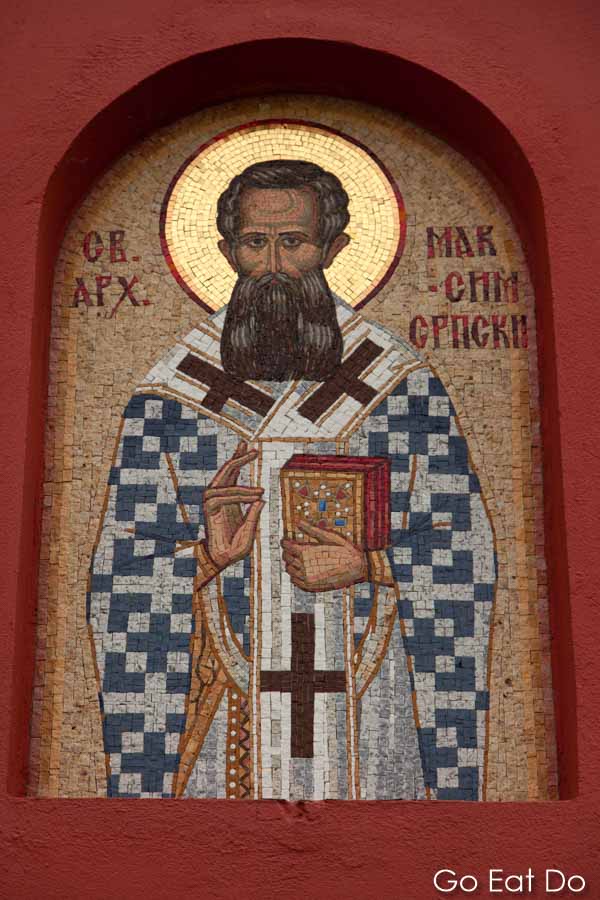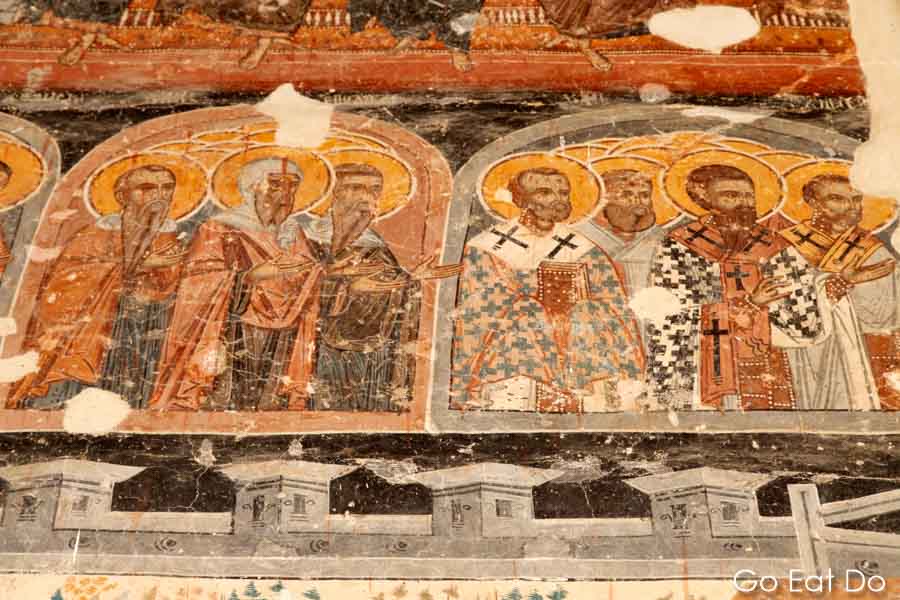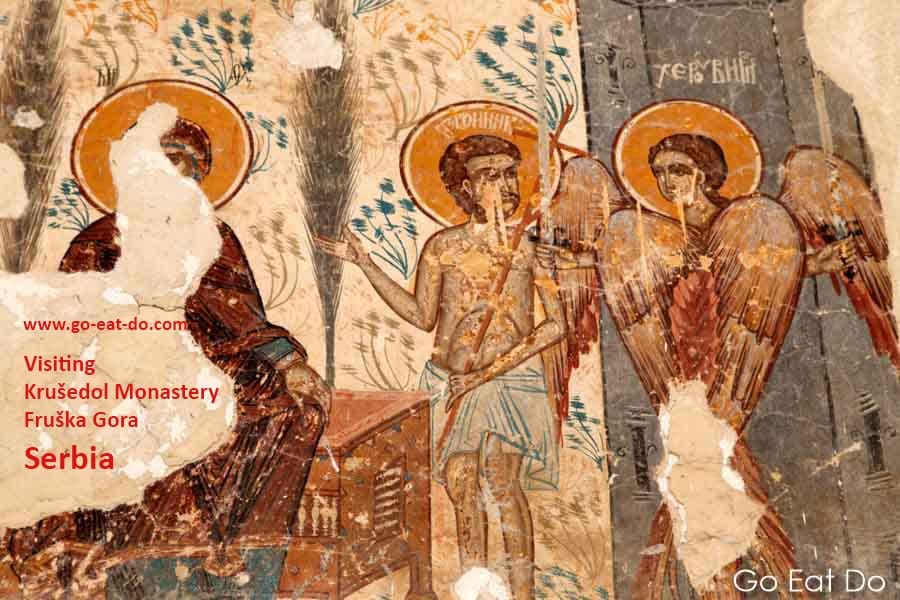Stuart Forster reports on the experience of visiting Krušedol Monastery at Fruška Gora, Serbia.
Disclosure: Some of the links below and banners are affiliate links, meaning, at no additional cost to you, I will earn a commission if you click through and make a purchase.
Joca, my guide, disappears through the arched gate leading towards Krušedol Monastery close to the periphery of Serbia’s Fruška Gora National Park.
We agreed he’d give me a couple of minutes to compose photographs of the red gatehouse before meeting on the other side of the heavy wooden door. The gatehouse’s cupola-topped form resembles an orthodox church. Arched mosaics on the exterior depict saints: I’m not able to decode the Cyrillic script above their shoulders but the golden orbs around their heads make it clear that they are regarded holy.

Monasteries in Fruška Gora
As we drove along the winding country road that leads here, Joca explained how Orthodox monks established as many as 35 monasteries in Fruška Gora. The monks were driven northward in the wake of the Ottoman occupation during the 15th century — it took until 1878 for Serbia to gain independence at the Congress of Berlin. Over the past couple of days, I’ve noticed how the intervening period still influences aspects of Serbian cuisine.
The coffee that I had earlier was served in a long-handled copper pot with a thick sediment of grinds at the bottom. The same style of drink might have been called Turkish or Greek coffee elsewhere. Here in Serbia it is termed domestic coffee.
Almost reverentially, Joca explains that the monks who lived in the monasteries of Fruška Gora played a key role in maintaining Serbia’s Orthodox heritage. If we had the time we could drive down to Divša Monastery, about 85 kilometres to the south. I hear how 16 of the region’s monasteries have survived the ravages of time and touring between them is an option. Judging by the road on the way here, doing that by bicycle is popular.

Krušedol on the money
As we stroll towards the monastery Joca asks if I’ve seen the building anywhere previously. I shake my head. He flips me a five dinar coin and asks me to look at its reverse. The fact Krušedol Monastery appears on Serbia’s currency is indicative of its national significance.
I listen to how the monastery we’re visiting was founded in 1509 by Maksim Branković, whose icon I photographed just minutes’ earlier. Branković had previously ruled under a name that is anglicised to George. He died in 1516 and was buried in the monastery. Two centuries later his bones were exhumed and burnt by Turkish troops during a violent spate of looting.
Clashes between the Habsburg and Turkish empires plus fighting in World War Two have left scars at Krušedol. Plaster-patched frescoes bear scratches yet still have vibrant colours.

Historic Serbian Cyrillic inscriptions
Joca points out a double-headed eagle bearing a crown as evidence of Krušedol’s connections with the Branković dynasty. He points towards inscriptions of Serbian Cyrillic that predate its reform. Manuscripts bearing such characters were once copied by the monks of Fruška Gora.
My guide’s infectious passion for this place conveys its national significance. I click another photo before we set off to visit nearby Novi Sad.

Books about Serbia
If you are planning on travelling to Serbia you may find the following books worth buying:


For historical background about the region you may find The Balkans, 1804–2012: Nationalism, War and the Great Powers by Mischa Glenny worth reading:

Travel to Serbia
I flew with KLM from Newcastle International Airport to Belgrade Nikola Tesla Airport via Amsterdam Schiphol.
The A1/E75 motorway connects Belgrade and Novi Sad, which are about 70 minutes’ drive apart.
Further information
See the Serbia Travel website for ideas about things to see and do in the country.
If you enjoyed this post why not sign up for the free Go Eat Do newsletter? It’s a hassle-free way of getting links to posts on a monthly basis.
‘Like’ the Go Eat Do Facebook page to see more photos and content.
If you use Pinterest feel free to pin this:



